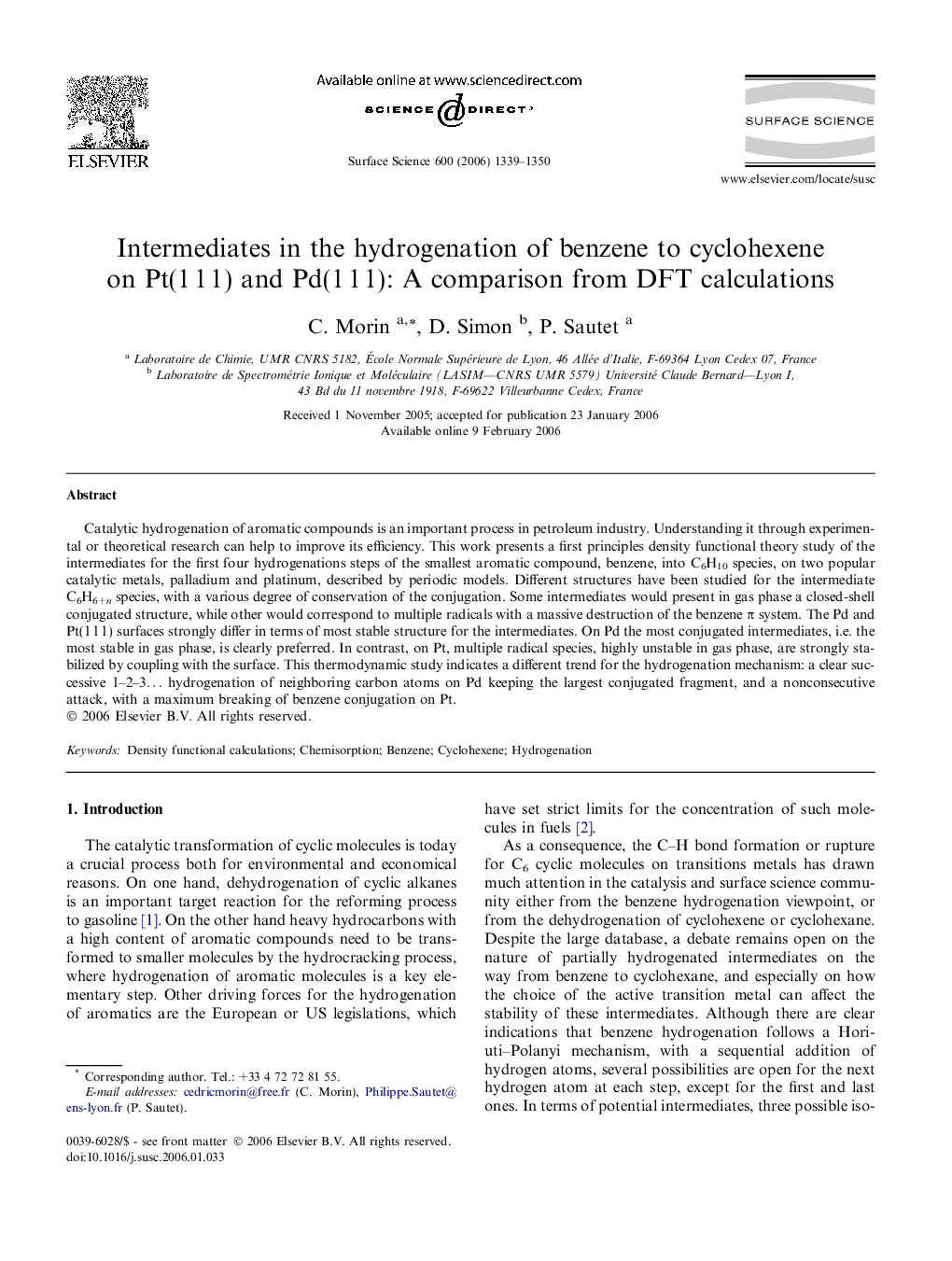| Article ID | Journal | Published Year | Pages | File Type |
|---|---|---|---|---|
| 5426799 | Surface Science | 2006 | 12 Pages |
Catalytic hydrogenation of aromatic compounds is an important process in petroleum industry. Understanding it through experimental or theoretical research can help to improve its efficiency. This work presents a first principles density functional theory study of the intermediates for the first four hydrogenations steps of the smallest aromatic compound, benzene, into C6H10 species, on two popular catalytic metals, palladium and platinum, described by periodic models. Different structures have been studied for the intermediate C6H6+n species, with a various degree of conservation of the conjugation. Some intermediates would present in gas phase a closed-shell conjugated structure, while other would correspond to multiple radicals with a massive destruction of the benzene Ï system. The Pd and Pt(1 1 1) surfaces strongly differ in terms of most stable structure for the intermediates. On Pd the most conjugated intermediates, i.e. the most stable in gas phase, is clearly preferred. In contrast, on Pt, multiple radical species, highly unstable in gas phase, are strongly stabilized by coupling with the surface. This thermodynamic study indicates a different trend for the hydrogenation mechanism: a clear successive 1-2-3⦠hydrogenation of neighboring carbon atoms on Pd keeping the largest conjugated fragment, and a nonconsecutive attack, with a maximum breaking of benzene conjugation on Pt.
